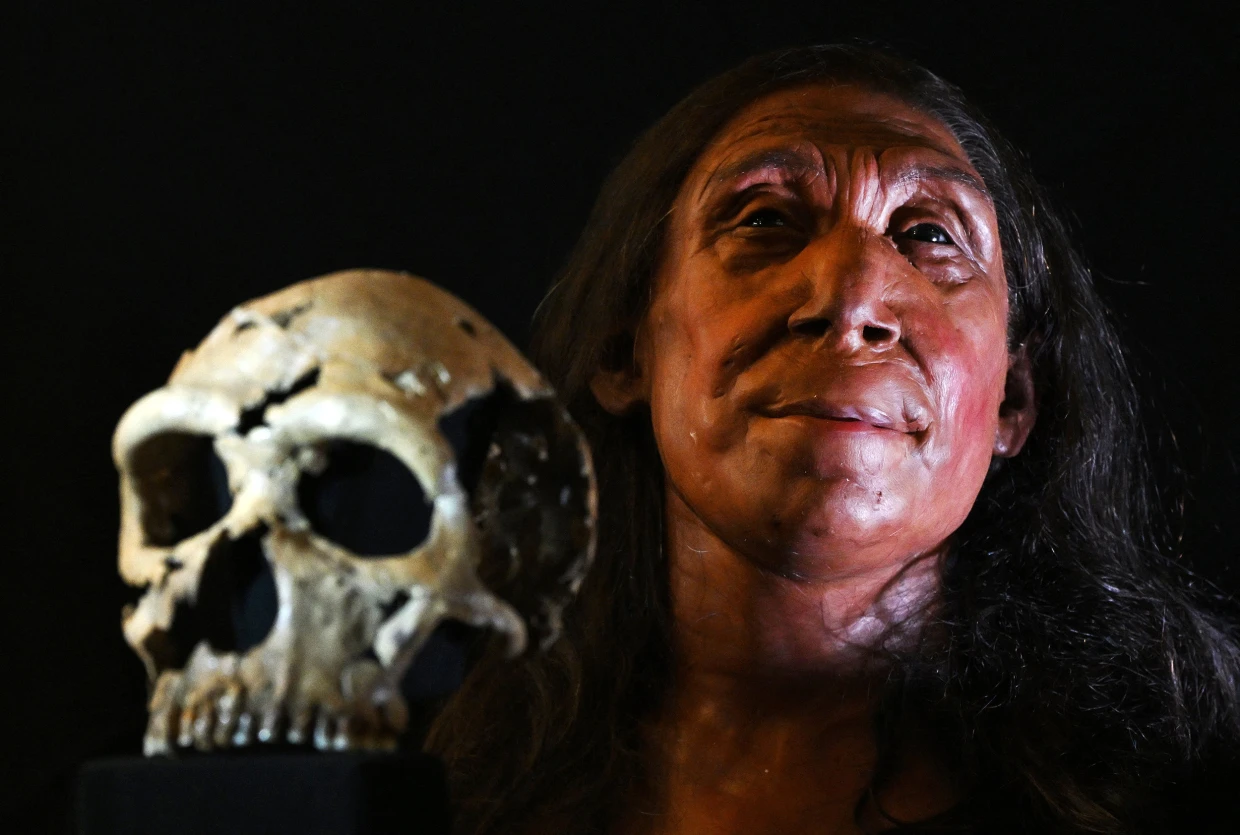Deep within a cave system nestled in the Kurdistan region of Iraq lies a testament to a bygone era. A painstakingly reconstructed skull, meticulously pieced together from over 100 bone fragments, offers a glimpse into the face of a Neanderthal woman who walked the Earth a staggering 75,000 years ago. Christened Shanidar Z, this remarkable discovery sheds new light on our enigmatic cousins, challenging long-held stereotypes and offering a more nuanced understanding of their lives.
The arduous task of reconstructing Shanidar Z’s skull fell to a team of archaeologists and conservators from the University of Cambridge. The skull itself presented a formidable challenge. Compressed by millennia of sediment and potentially crushed by a rockfall soon after death, it had been flattened to a mere two centimeters thick. This delicate jigsaw puzzle required meticulous attention to detail, with each fragment carefully cleaned, analyzed, and positioned to recreate the original structure. As Dr. Marta Mirazón Lahr, a team member, explains, “It was like working with a high-stakes, 3D jigsaw puzzle. A single block could take over a fortnight to process.”
The reconstructed skull allowed researchers to create a 3D facial reconstruction, revealing Shanidar Z’s distinctive features. Prominent brow ridges, a characteristic Neanderthal trait, frame her eyes. Her broad nose, likely an adaptation to the cold, harsh environments Neanderthals inhabited, hints at their resilience. Detailed analysis of the teeth points to an age of around 40 at the time of death. The significant wear and tear on her molars suggest a diet requiring significant chewing, potentially including tough meats and fibrous plants. Additionally, signs of infections and gum disease paint a picture of a life marked by the challenges of a hunter-gatherer existence.
The discovery of Shanidar Z holds immense significance beyond the facial reconstruction. The location where the skull was found, Shanidar Cave, has been a treasure trove for archaeologists since the 1950s. Numerous Neanderthal remains, including bones from at least 10 individuals, have been unearthed there. The sheer number, coupled with the careful positioning of the remains, strongly suggests a dedicated burial site. This evidence challenges the notion of Neanderthals as brutish and uncaring, hinting instead at a society that cared for its deceased. As Dr. Rebecca Morel, science editor, poignantly observes, “There’s absolutely no doubt that they maintained a tradition over several hundred years of, ‘This is where you put Grandma.'”
Shanidar Cave has played a pivotal role in transforming our understanding of Neanderthals. Previously, they were often portrayed as simple, lacking the sophistication of modern humans (Homo sapiens). However, ongoing excavations reveal a far more complex picture. Evidence suggests they possessed sophisticated toolmaking skills, built controlled fires, and perhaps even engaged in a form of communal cooking. This paints a picture of a resourceful and social species, capable of planning and collaborating – behaviors previously thought exclusive to Homo sapiens.
The story of Shanidar Z is a testament to the power of scientific collaboration and meticulous research. It’s a reminder that even the most fragmentary remains can hold stories waiting to be unearthed. As we peer into the face of this ancient woman, we gain a deeper appreciation for the diversity of human existence and the rich tapestry of our shared evolutionary journey. The Neanderthals were not simply our primitive ancestors, but a distinct branch of the human family tree, with their own unique adaptations and behaviors. By studying them, we gain a richer understanding of who we are and where we come from.



